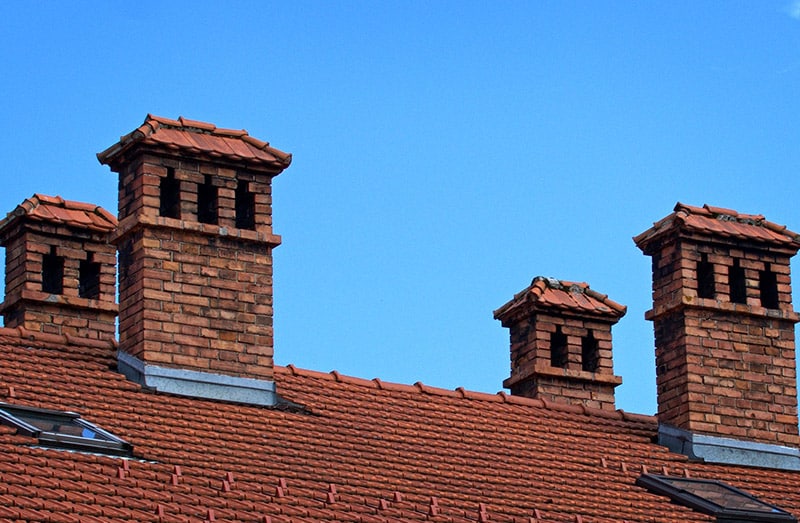
Chimney liners are an integral part of your home’s chimney system, playing a crucial role in safety, efficiency, and longevity. Over time, however, chimney liners can deteriorate, leading to potential hazards and costly repairs. In this blog, we will explore the causes, signs, and solutions for chimney liner deterioration, helping you better understand the importance of regular chimney maintenance.
Causes of Chimney Liner Deterioration
-
Age: Like any other component of your home, chimney liners have a finite lifespan. Most chimney liners are constructed from materials such as clay tile, stainless steel, or aluminum, all of which can degrade over time due to exposure to heat, moisture, and corrosive byproducts of combustion.
-
Creosote Buildup: Creosote is a sticky, highly flammable substance that accumulates in chimneys when wood or other organic fuels burn incompletely. This substance can corrode and deteriorate the chimney liner over time if not regularly cleaned.
-
Excessive Moisture: Moisture is one of the primary culprits behind chimney liner deterioration. It can enter the chimney through gaps or cracks, causing the liner to deteriorate faster. Freeze-thaw cycles can also exacerbate the damage as water expands when it freezes.
-
Chemical Corrosion: Certain types of fuels, such as natural gas or oil, produce acidic byproducts when burned. These acids can eat away at the chimney liner, leading to deterioration and even perforation in severe cases.
-
Physical Damage: Chimney liners can sustain damage from falling debris, chimney fires, or even natural disasters. Even minor cracks or chips can lead to accelerated deterioration over time.
Signs of Chimney Liner Deterioration
Detecting chimney liner deterioration early is crucial to prevent further damage and ensure your safety. Here are some common signs to look out for:
-
Visible Cracks or Gaps: Inspect your chimney liner for visible cracks or gaps. These can allow smoke, heat, and moisture to escape into the walls or attic, potentially causing structural damage or fires.
-
Rust or Corrosion: If you have a stainless steel or aluminum chimney liner, look for signs of rust or corrosion. These materials are resistant to rust, but they can corrode if exposed to certain conditions.
-
Excessive Creosote Buildup: A thick layer of creosote inside your chimney is a red flag. It not only increases the risk of chimney fires but also accelerates liner deterioration.
-
Deteriorated Masonry: If you notice crumbling or deteriorated masonry in and around your chimney, it could be a sign that moisture has penetrated the liner, causing damage.
-
Reduced Efficiency: A deteriorating chimney liner can lead to reduced draft and efficiency, resulting in poor combustion and increased energy costs.
Solutions for Chimney Liner Deterioration
Addressing chimney liner deterioration promptly is essential to ensure the safety and functionality of your fireplace or heating system. Here are some solutions to consider:
-
Chimney Liner Repair: For minor issues such as small cracks or gaps, chimney liner repair may be sufficient. This typically involves applying a heat-resistant sealant to patch up the damaged areas.
-
Chimney Liner Relining: If the damage is extensive, relining your chimney may be necessary. This involves installing a new liner inside the existing chimney structure. Stainless steel and cast-in-place liners are popular choices for relining.
-
Regular Cleaning: Prevent creosote buildup and extend the life of your chimney liner by scheduling regular chimney cleaning and inspections with a professional chimney sweep.
-
Moisture Control: Address any issues with water infiltration by repairing flashing, chimney caps, or installing a chimney waterproofing system.
-
Fuel Choice: If your liner has deteriorated due to acidic byproducts from certain fuels, consider switching to cleaner-burning fuels like natural gas or installing a liner designed for your specific fuel type.
Conclusion
Chimney liner deterioration is a common issue that can compromise the safety and efficiency of your home’s chimney system. Regular maintenance, inspections, and addressing issues promptly are essential for preserving the integrity of your chimney liner. If you suspect any problems with your chimney liner, don’t hesitate to consult a professional chimney technician to assess the situation and recommend the most appropriate solutions. By taking proactive steps, you can ensure that your fireplace or heating system remains safe and efficient for years to come.
